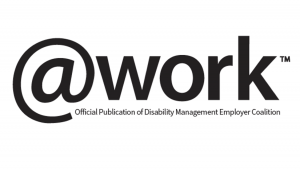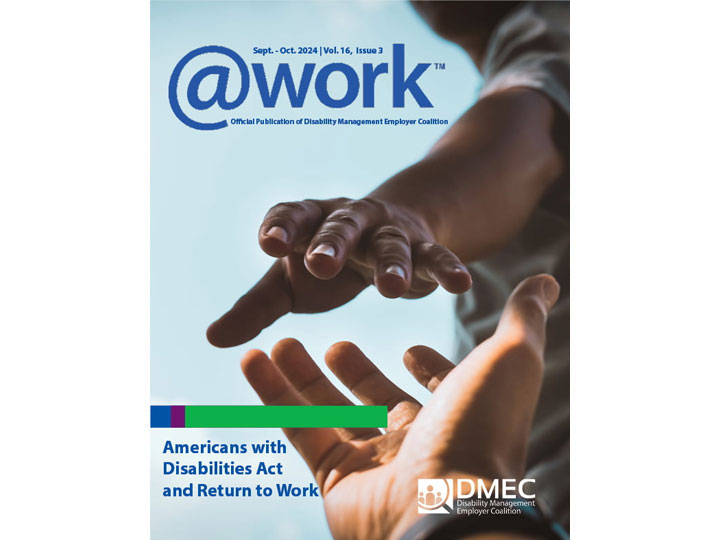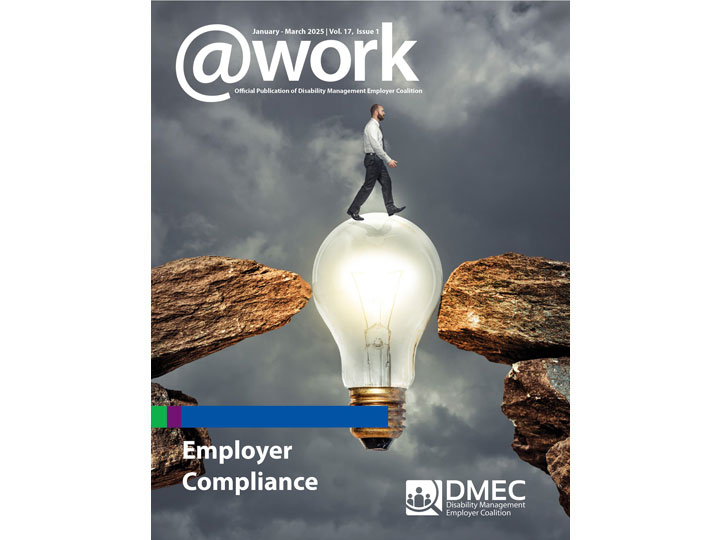The Disabled Workforce
Keeping the ADA Process Interactive and Moving Forward
By Rachel Shaw
@Work Magazine, September/October 2024 Issue
The Americans with Disabilities Act (ADA) requires employers to “engage in a timely good faith interactive process, and … provide reasonable accommodation” for employees who have disabilities that prevent them from performing major life activities. Reciprocally, applicants and employees are obligated to engage with employers in good faith. Most participate in the process, but what if they do not? Employers have a number of options to ensure they continue to move the ADA interactive process forward in a timely manner.
The key is to make contact and document efforts and next steps during the interactive process. Employee engagement is required but if employees do not put in good-faith efforts, you can and should move the process forward. Sometimes you will be documenting an employee’s lack of engagement, but more often than not you will get the employee to work with you in your efforts to help! Here are a few common scenarios:
- An employee won’t call you back: If you are calling an employee at the beginning of the process, try at least twice, and leave messages. On the second call, leave a detailed message about why you are calling and outline the next steps in the process. If the employee doesn’t return your call, move forward and send an introductory letter that documents contact attempts and what you are doing to move the process forward. You may have to document assumptions due to the employee’s lack of response and how those assumptions are guiding your actions.
- An employee says he didn’t ask for the interactive process and doesn’t need it: If you are calling an employee to start the interactive process and the employee indicates he isn’t disabled and doesn’t require this process, determine if you can simply stop the interactive process or have to proceed. If the issue that prompted the interactive process is related to the safety of the employee or others, you will likely need to continue the process and obtain medical clarification on possible restrictions from the employee’s doctor or a third-party fitness-for-duty examiner. If the issue is performance related and the employee says he isn’t disabled, it may be appropriate to conclude the process and send a letter documenting this action that signals you have ended the process.

- An employee isn’t providing medical clarification: Document your request for clarification of requests for medical reporting by creating a medical questionnaire to outline the information needed and establish expectations for submission. If it is a workers’ compensation doctor, have your adjuster send the questionnaire through appropriate protocols. If the questionnaire relates to a nonwork-related matter, send the questionnaire to the doctor and a copy to the employee. Since you are not asking for any protected medical information, you don’t need a release from the employee.
- An employee doesn’t respond to calls or invitations for a meeting or does not show up to an interactive process meeting: When you are unable to confirm an employee will attend an interactive process meeting by phone or email, send a formal invitation by mail and include language such as “Should the date or time of your meeting not be convenient for you or if you do not plan to attend, please contact me prior to ….” If the employee does not respond or show up, proceed with the meeting. Take notes and include details about outreach to the employee regarding the meeting. The meeting notes should document decisions made by the organization. After the meeting, send the notes to the employee and invite him/her to participate in the interactive process by submitting written responses by a specific date.
The ultimate goal of an interactive process is to gather data and educate parties. The hope is that employees will fully engage but if that doesn’t happen, employers can move forward.
DMEC-Related Resources
- Reasonable Accommodation Process Resources & Tools
- Building a Return-to-Work Program Microcredential Course








